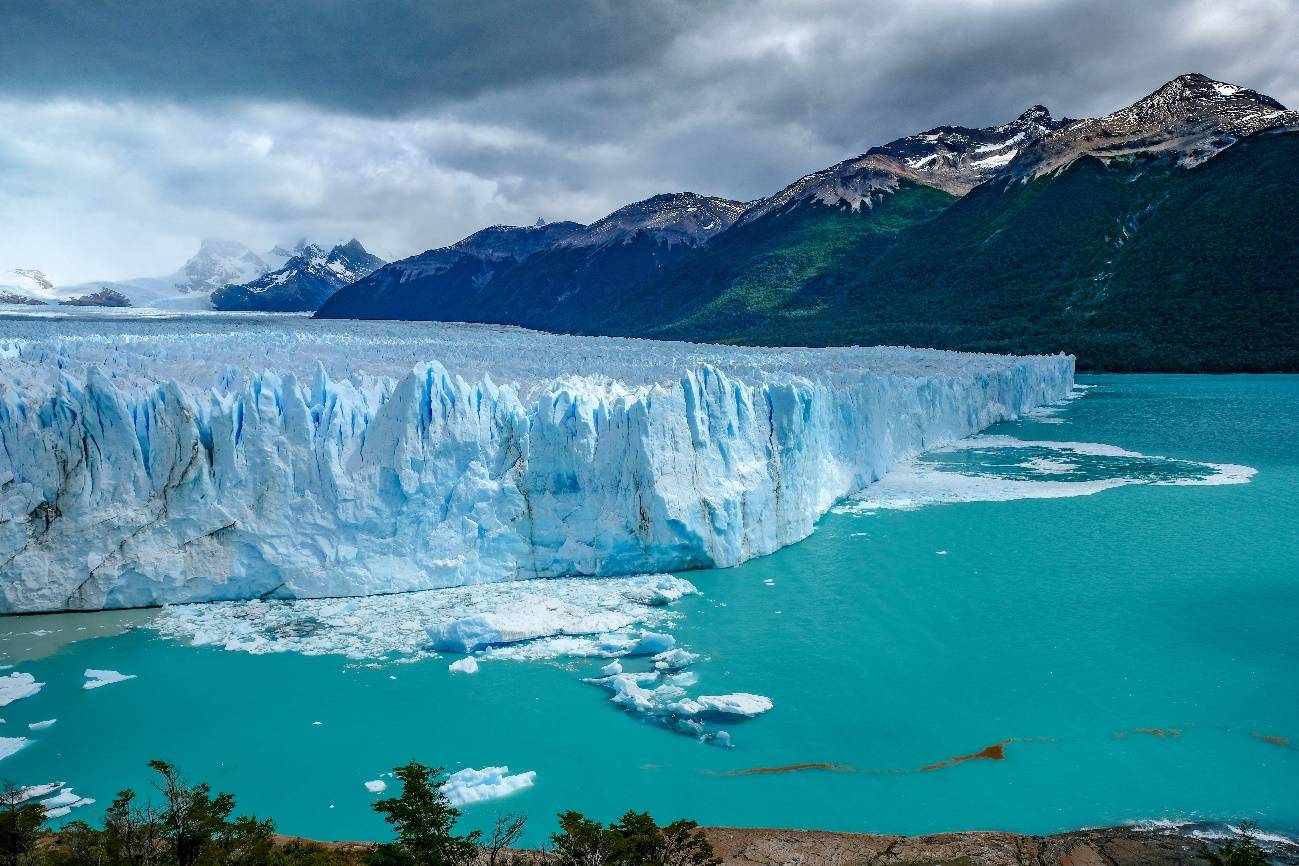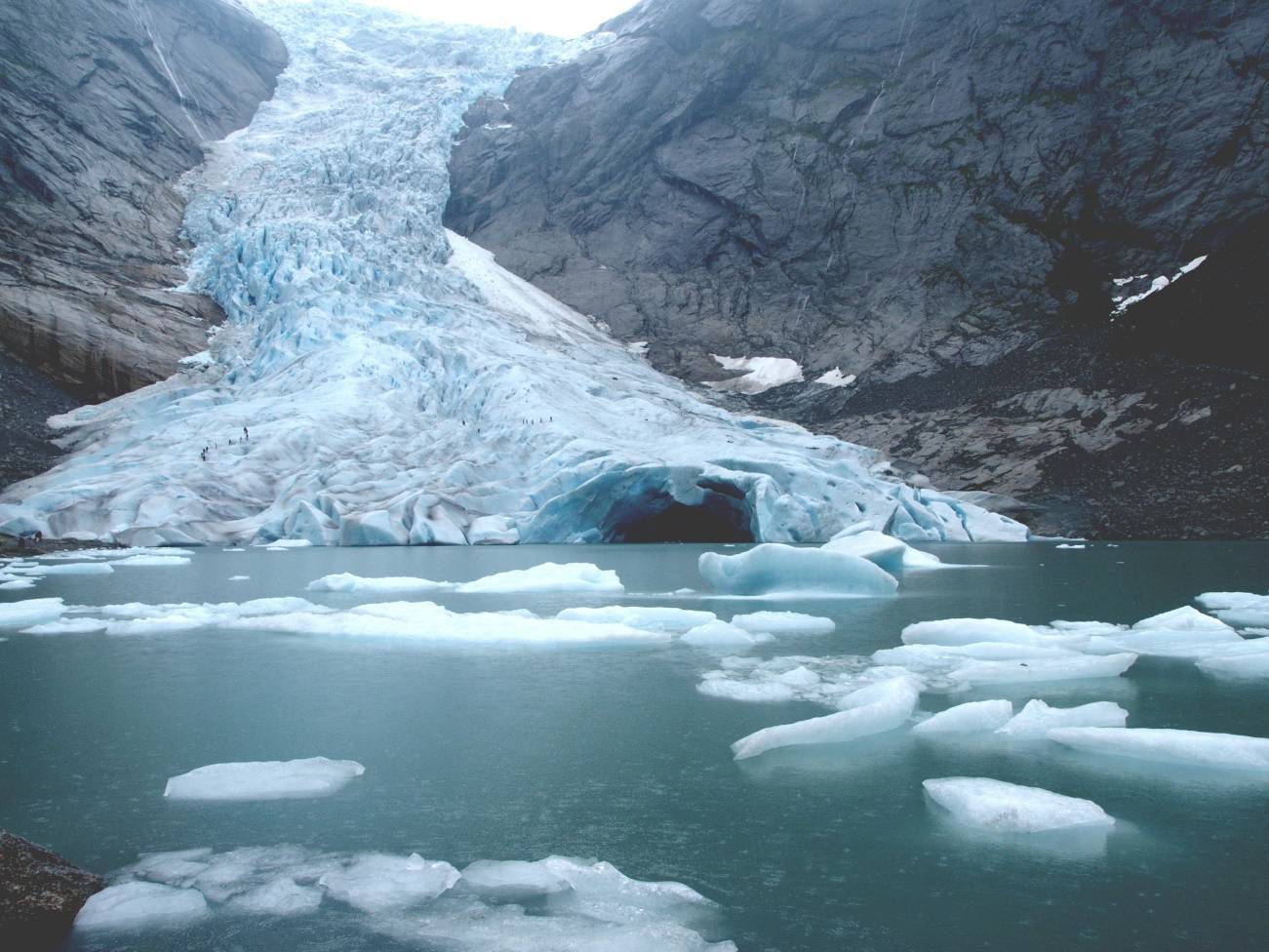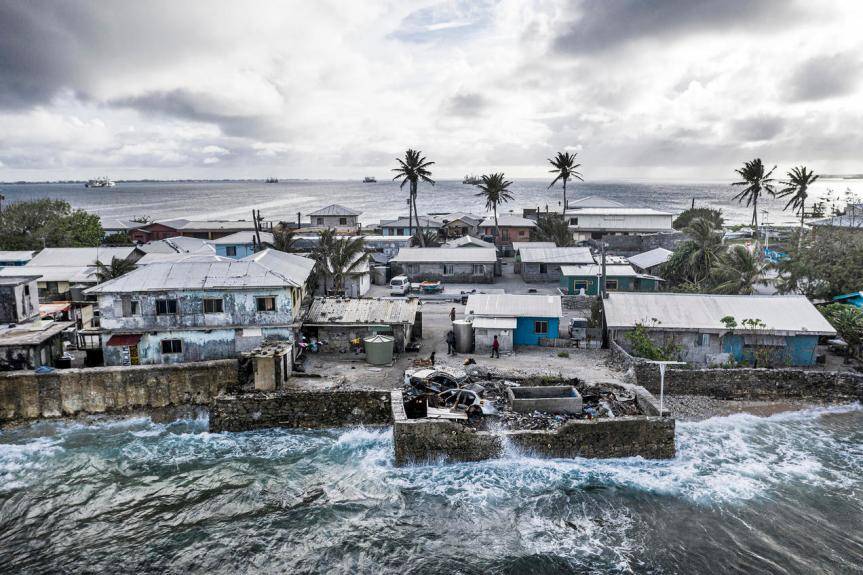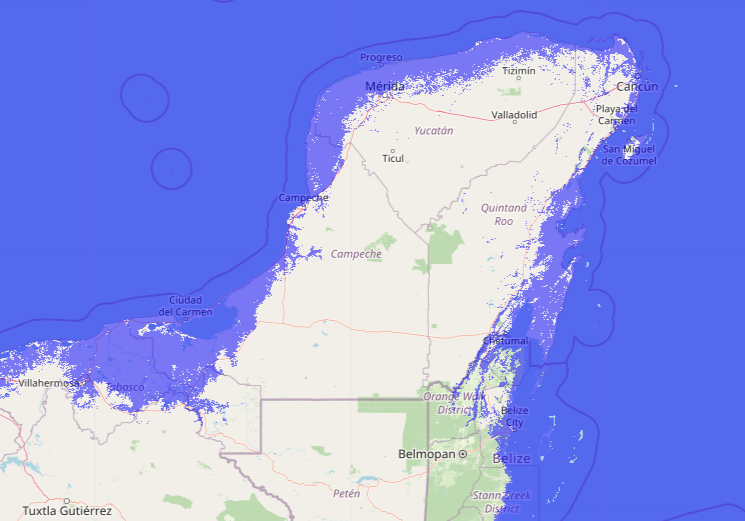HOW IS SEA LEVEL RISE RELATED TO CLIMATE CHANGE?
According to NOAA, the sea level can rise by two different mechanisms with respect to climate change. First, as the oceans warm due to an increasing global temperature, seawater expands—taking up more space in the ocean basin and causing a rise in water level. The second mechanism is the melting of ice over land, which then adds water to the ocean (NOAA 2021). On the other hand, The National Geographic (Nunez 2023) says that the change in sea levels is linked to three primary factors:
- Thermal expansion: When water heats up, it expands. About half of the sea-level rise over the past 25 years is attributable to warmer oceans simply occupying more space.
- Melting glaciers: Large ice formations such as mountain glaciers naturally melt a bit each summer. In the winter, snows, primarily from evaporated seawater, are generally sufficient to balance out the melting. Recently, though, persistently higher temperatures caused by global warming have led to greater-than-average summer melting as well as diminished snowfall due to later winters and earlier springs. That creates an imbalance between runoff and ocean evaporation, causing sea levels to rise.
- Loss of Greenland and Antarctica’s ice sheets: As with mountain glaciers, increased heat is causing the massive ice sheets that cover Greenland and Antarctica to melt more quickly. Scientists also believe that meltwater from above and seawater from below is seeping beneath Greenland’s ice sheets, effectively lubricating ice streams and causing them to move more quickly into the sea. While melting in West Antarctica has drawn considerable focus from scientists, especially with the 2017 break in the Larsen C ice shelf, glaciers in East Antarctica are also showing signs of destabilizing.
WHY SEA LEVEL MATTERS
Globally, 8 of the world’s 10 largest cities are near a coast, according to the U.N. Atlas of the Oceans. In urban settings along coastlines around the world, rising seas threaten infrastructure necessary for local jobs and regional industries. Roads, bridges, subways, water supplies, oil and gas wells, power plants, sewage treatment plants, landfills—the list is practically endless—are all at risk from sea level rise.
Higher background water levels mean that deadly and destructive storm surges, such as those associated with Hurricane Katrina, “Superstorm” Sandy, and Hurricane Michael—push farther inland than they once did. Higher sea level also means more frequent high-tide flooding, sometimes called “nuisance flooding” because it isn’t generally deadly or dangerous, but it can be disruptive and expensive. (Lindsey 2022).
IMAGES.

Figure 1. Melted glacier in “Los glaciares” national park Santa Cruz province Patagonia Argentina.

Figure 2. Briksdal glacier Norway, which is melting.

Figure 3. Majuro, the capital of the Marshall Islands, where residents have had to build homemade seawalls to protect their homes and communities. Photo Credit: Kadir van Lohuizen / NOOR.

Figure 4. Shows Cancún and other destinations underwater if sea level rises 10 meters.
Elaborado por Ing. Alexander Medina
Junio 2023



